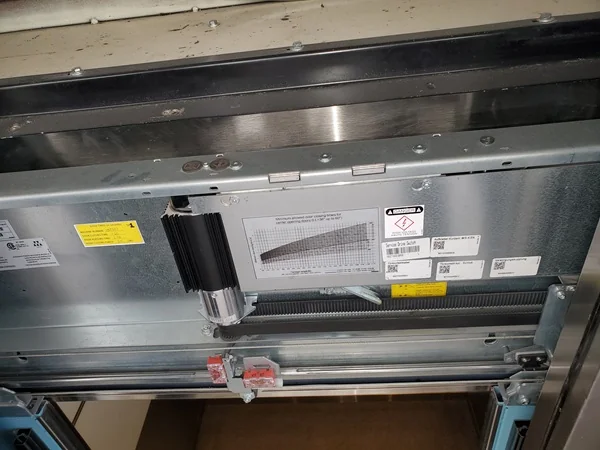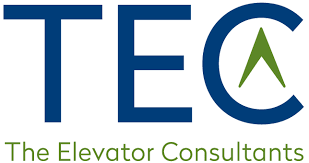As a building owner or property manager, it is your responsibility to ensure the safety and reliability of your elevators. Regular elevator maintenance is essential to ensure smooth, safe operation, and to prolong the lifespan of your elevators.
Using an elevator maintenance checklist can help you stay on track. This checklist typically includes tasks and inspections to ensure safe and efficient operation. ASME A17.1 
Safety Code for Elevator’s and Escalators has the minimum code requirements a building must follow. A building must check with its’ Authority Having Jurisdiction to understand what specific code they are required to follow. While specific requirements might vary depending on the elevator type and local regulations, here are some items often included:
Maintenance Schedule and Contract
- Understand the maintenance schedule recommended by the elevator manufacturer and elevator code and adhere to it. The building should know what is required for their specific equipment to get the most of the equipment.
- Ensure you have a clear and comprehensive maintenance contract with an authorized elevator service provider. The maintenance service contract should have terms and conditions that meet the needs of the specific building and not just a template agreement provided by the service provider. If the building uses a template contract provided by the service provider, the building should have the requirements of the building added into the contract.
Routine Maintenance
- Routine maintenance and repairs are necessary to keep elevators running safely and reliably. This is usually covered under your current elevator maintenance agreement.
- There are many terms in a contract including items that are covered and not covered. The building’s elevator maintenance contract should provide coverage so the building knows what their yearly cost entails without additional elevator expenses. Some maintenance items included in the elevator contract are ride quality adjustment, door alignment correction, component replacement, electrical system repairs, cleaning, and lubrication.
Documentation and Record-Keeping
- Keep a detailed log of all maintenance tasks completed, issues discovered, and repairs. This is a code requirement that is the owner’s responsibility. It is common for building owners and property managers to rely on the elevator service provider for this when it is actually the buildings’ responsibility.
Safety and Code Compliance
- Be familiar with local, national safety codes and regulations that pertain to elevator operation, maintenance, and safety. ASME A17.1 Safety Code for Elevators and Escalators among others, are great resources to have on hand to understand what code is required at the location.
- Ensure that your elevator is inspected and certified by relevant authorities having jurisdiction as required.
Emergency Preparedness
- Have a well-defined emergency plan that covers scenarios such as power outages, entrapments, and evacuations. This can also be part of your elevator maintenance service agreement. The service levels required in your elevator maintenance contract will assist in emergencies.
- As part of elevator maintenance, the service provider will ensure that communication systems, emergency stop buttons, emergency lighting, and other safety features function correctly.
Budgeting for Repairs and Upgrades
- Plan for potential repair costs and allocate funds for unexpected breakdowns or necessary upgrades. Although you have a contract, the industry does change, items become obsoletes and there are building related issues that may happen. A budget for these items should always be created.
- Stay on top of the elevator industry changes by discussing with other buildings and individuals for newer technologies and trends that could help your elevator system. However, an elevator consultant can also inform you of trends and changes. Regularly review the condition of the elevators and assess whether modernization or technology updates are needed.
Conduct an Elevator Audit
- Regularly review the condition of the elevator and assess the current state of the equipment. Determine if your equipment is getting the maintenance needed.
- Discuss with tenants or people using the elevators if they are having any issues.
- Review your maintenance records and files to understand what is going on with your elevator system.
- Stay on top of the all issues.
Regularly Required Inspections
- Elevators should be inspected (inspected means by an authority having jurisdiction) quarterly, semi-annually, or annually, depending on state and local code/law requirements.
- These inspections should be carried out by a licensed and certified elevator inspector, who will check for any mechanical and safety issues.
Elevators are essential to buildings. Elevators need regular maintenance and safety checks to keep them running safely and efficiently. Routine maintenance, staying informed about safety regulations, and being prepared for emergencies are essential responsibilities for building owners and property managers. As mentioned, elevator and escalator maintenance is the responsibility of the building.
Relying solely on your elevator service provider is not the best practice. The building should provide a “report card” or even have monthly, quarterly or yearly (interval is pending the building needs) meetings with your elevator service provider get a state of your elevators. The building has insight to all mechanical equipment of the building. And elevators and escalators should be part of this insight. The information you can gather by developing an elevator maintenance checklist for your building will allow the equipment to live its’ life cycle with minimal issues. The insight the building will gain will save significant time and money over the years. Prepare an elevator maintenance checklist for your building.
